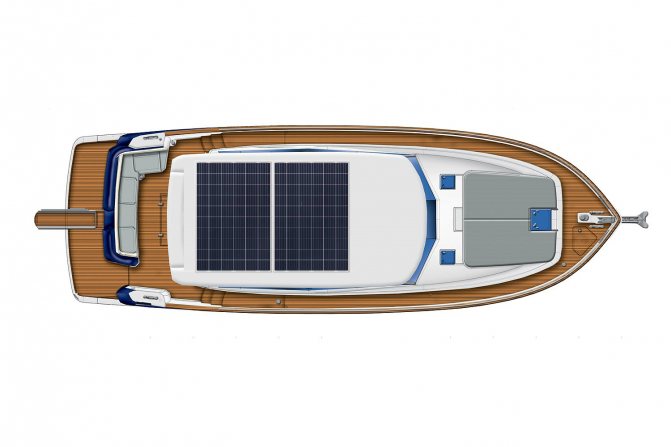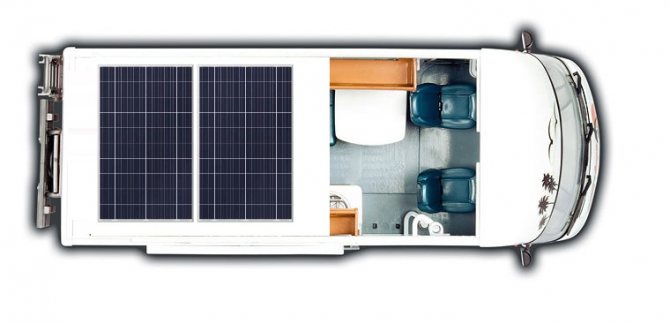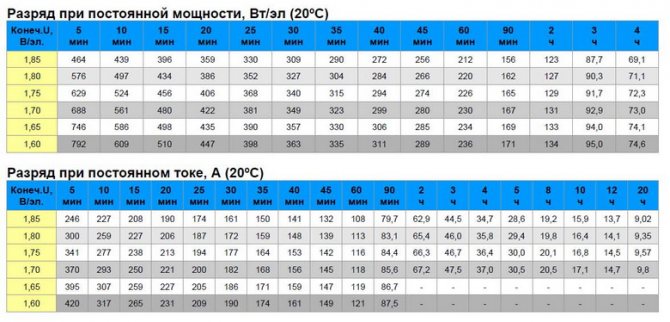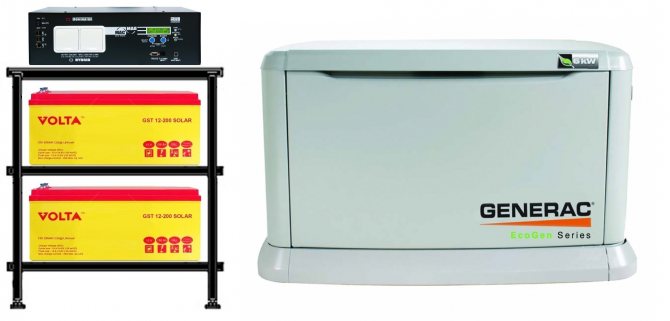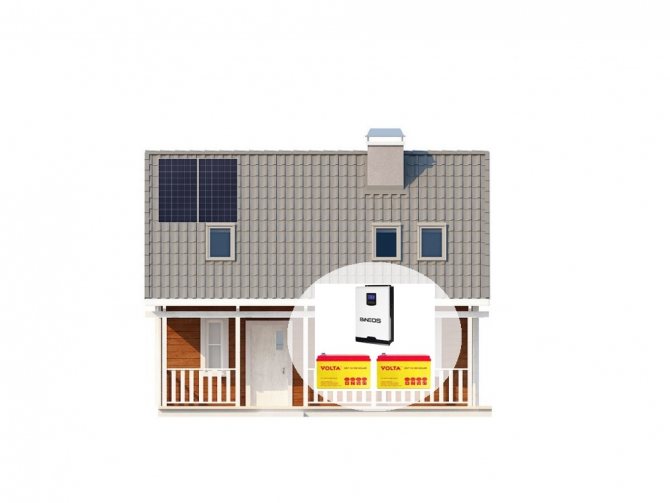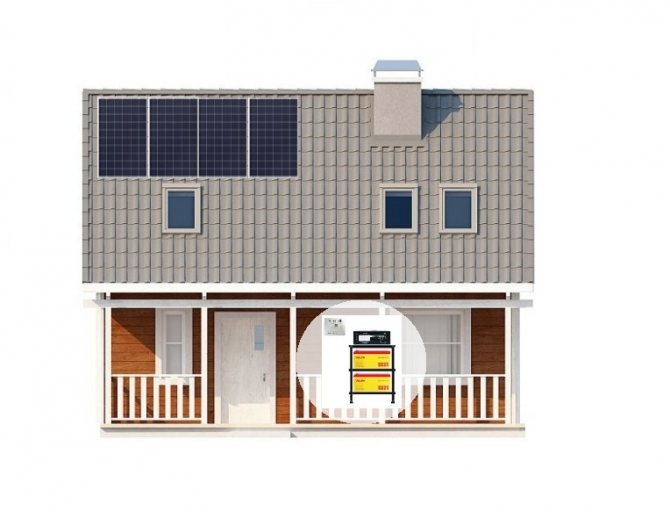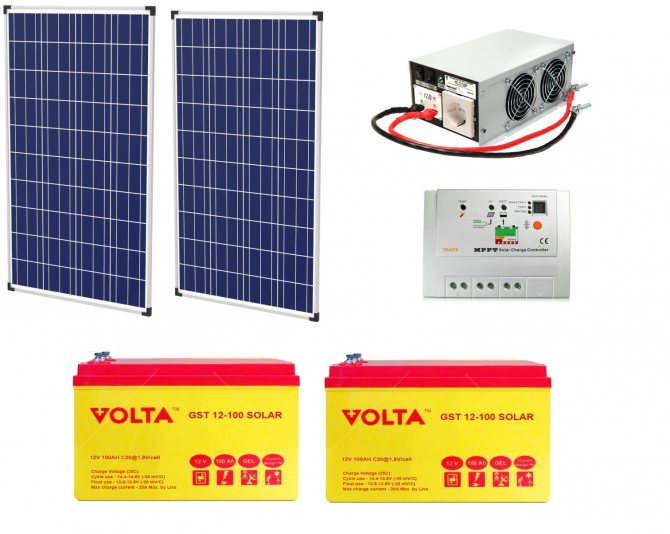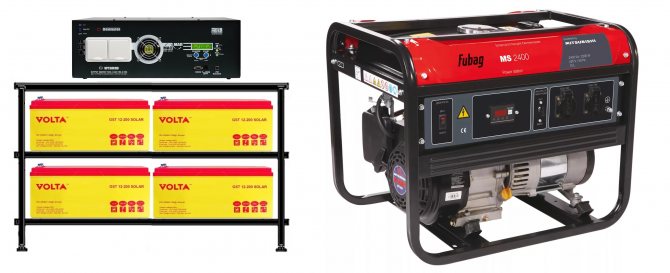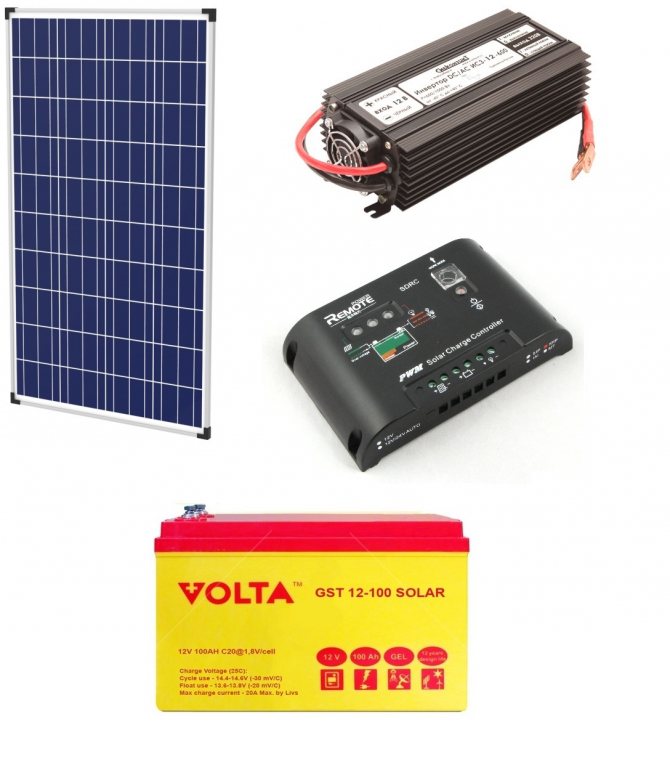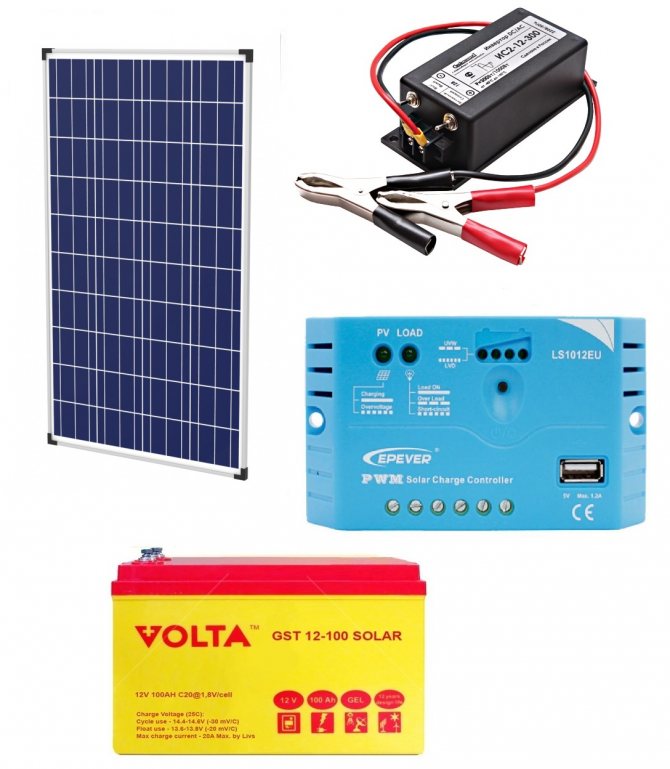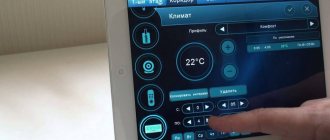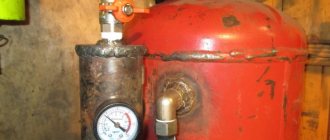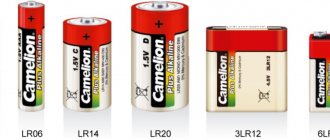Alkaline batteries
Unlike acidic ones, alkaline batteries do an excellent job with deep discharge and are capable of delivering currents for a long time by about 1/10 of the battery capacity. Moreover, it is strongly recommended to discharge alkaline batteries completely so that the so-called "memory effect" does not occur, which reduces the capacity of the battery by the amount of the "unselected" charge.
In comparison with acidic ones, alkaline batteries have a significant - 20 years or more - service life, give a stable voltage during the discharge process, can also be serviced (flooded) and unattended (sealed) and, it seems, are simply created for solar energy. In fact, no, because they are not capable of charging with the weak currents that solar panels generate. A weak current flows freely through the alkaline battery without filling the battery. Therefore, alas, the lot of alkaline batteries in autonomous power systems is to serve as a "bank" for diesel generators, where this type of storage is simply irreplaceable.
Battery types
There are several types of batteries that can be seen on the Russian market today.
Gel
One of the most common types of batteries, actively used for the arrangement of autonomous power supply systems. Its chemical composition includes lead and sulfuric acid of a gel consistency. Sulfuric acid acts as a conductive electrolyte. The fact that it is embedded in a battery in the form of a gel makes the recombination process more efficient and faster. Gel batteries have an average lifespan of 5-8 years.
Lead acid
This battery is not much different from a gel battery. Unless a device of this type contains an acid of a liquid consistency, which somewhat weakens its performance. The service life of a lead acid battery is relatively short - 2-4 years. Such batteries are used in the automotive industry.
AMG
The AMG battery contains the same lead and sulfuric acid. The difference with other devices is manufacturing. For the content of sulfuric acid in a battery of this type, a special absorbing vessel made of the finest glass threads is taken away. The material is called glass mat. AMG batteries are similar in their characteristics to gel batteries and last approximately 5-8 years.
Alkaline
Alkaline batteries always contain nickel. The second chemical element can be iron or cadmium. They are named alkaline because of the electrolyte used - alkali. Iron-nickel and cadmium-nickel batteries have the advantage of being able to withstand heavy continuous loads and obscene operation with an impressive service life of 15 years, and the disadvantage is the need for additional maintenance (topping up water, electrolyte, etc.). Such devices have a low voltage - 2V. Therefore, for use in autonomous power systems, they are completed in several pieces in monoblocks or a battery. During operation, such devices release alkali. For safety reasons, it is recommended that alkaline batteries be provided in a separate, ventilated room. The devices are suitable for connection to stand-alone systems.
Lithium ion
These batteries contain lithium. With a service life of about 10 years, it has a high cost. Since autonomous systems are designed to save money, lithium-ion batteries are rarely bought for them. Although these are some of the most powerful devices.Lithium-ion batteries withstand heavy loads and frequent deep discharges.
If you want to buy a battery in Krasnodar, you can choose any type. We have a large selection of models in our warehouse. For advice on choosing a battery, please contact. The knowledge and rich experience of our specialists in the field of autonomous solar systems will allow you to make the right and profitable purchase.
Li-ion batteries
Batteries of this type have a fundamentally different "chemistry" than batteries for tablets and laptops, and use the lithium iron phosphate reaction (LiFePo4). They charge very quickly, can give up to 80% of the charge, do not lose capacity due to incomplete charging or long storage in a discharged state. Batteries withstand 3000 cycles, have a service life of up to 20 years, and are also produced in Russia. The most expensive of all, but in comparison with, for example, acidic ones, they have twice the capacity per unit of weight, that is, they will need half as much.
Main technical characteristics of the battery
The characteristics and requirements for batteries are determined based on the characteristics of the operation of the solar power plant itself.
Batteries must:
- be designed for a large number of charge-discharge cycles without significant loss of capacity;
- have a low self-discharge;
- maintain performance at low and high temperatures.
The key characteristics are considered to be:
- battery capacity;
- full charge and permissible discharge rate;
- conditions and service life;
- weight and dimensions.
How to calculate and choose the right battery
Calculations are based on simple formulas and tolerances for losses that arise in an autonomous power supply system.
The minimum supply of energy in the batteries should provide the load in the dark. If from dusk to dawn the total energy consumption is 3 kW / h, then the battery bank must have such a reserve.
The optimal energy supply should cover the daily needs of the facility. If the load is 10 kW / h, then a bank with such a capacity will allow you to “sit out” 1 cloudy day without any problems, and in sunny weather it will not discharge by more than 20-25%, which is optimal for acid batteries and does not lead to their degradation.
Here we do not consider the power of solar panels and take it for the fact that they are able to provide such a charge to the batteries. That is, we are building calculations for the facility's energy needs.
The energy reserve in 1 battery with a capacity of 100 Ah with a voltage of 12 V is calculated by the formula: capacity x voltage, that is, 100 x 12 = 1200 watts or 1.2 kW * h. Therefore, a hypothetical object with a night consumption of 3 kW / h and a daily consumption of 10 kW / h needs a minimum bank of 3 batteries and an optimal one of 10. But this is ideal, because you need to take into account the allowances for losses and equipment features.
Where energy is lost:
50% - permissible discharge level conventional acid batteries, so if the bank is built on them, then there should be twice as many batteries as a simple mathematical calculation shows. Batteries optimized for deep discharge can be “drained” by 70–80%, that is, the capacity of the bank should be higher than the calculated one by 20–30%.
80% - average efficiency of an acid battery, which, due to its peculiarities, gives off energy 20% less than it stores. The higher the charge and discharge currents, the lower the efficiency. For example, if an electric iron with a power of 2 kW is connected to a 200Ah battery through an inverter, the discharge current will be about 250A, and the efficiency will drop to 40%. Which again leads to the need for a two-fold reserve capacity of the bank, built on acid batteries.
80-90% - average efficiency of the inverter, which converts DC voltage into AC 220 V for the household network.Taking into account energy losses, even in the best batteries, the total losses will be about 40%, that is, even when using OPzS and even more so AGM batteries, the capacity reserve should be 40% higher than the calculated one.
80% - the efficiency of the PWM controller charge, that is, solar panels will physically not be able to transfer to batteries more than 80% of the energy generated on an ideal sunny day and at the maximum rated power. Therefore, it is better to use more expensive MPPT-controllers, which ensure the efficiency of solar panels up to almost 100%, or to increase the battery bank and, accordingly, the area of solar panels by another 20%.
All these factors must be taken into account in the calculations, depending on what constituent elements are used in the solar generation system.
Battery characteristics for autonomous systems
Next, we will dwell on the main technical characteristics of the batteries.
Battery capacity (Ah)
Capacity is the amount of energy that provides a 100% charge to the battery. This parameter is basic. The unit of measurement is Ampere-hours. The nominal capacity of the battery is indicated on the back of its case. But the indicators indicated by the manufacturer are often at odds with the real ones.
The real battery capacity is plus / minus 10-20% of the nominal capacity. The discrepancy between the indicated and actual parameters is due to the environmental conditions of the battery.
The value of the real capacity is close to the nominal value when the air temperature is +20 degrees. Lower or higher temperatures will adversely affect the capacity and therefore the service life of the battery. At temperatures below + 10-0 degrees, the value decreases, at temperatures above +20 degrees, the value increases.
The capacity of the battery is characterized by a gradual decrease as the battery is used. This is due to wear and tear on the device. The standard battery capacity for an off-grid solar system is 100-200 Ah.
Battery voltage
Another important characteristic. Voltage is a measure of the efficiency of a battery. This is a value that indicates the quality of energy that the device is able to take and give away. Measured in Volts.
The manufacturer's rated voltage, as well as the capacity, is indicated on the back of the battery case. But often the values of the nominal and real voltage diverge. At an optimum ambient temperature of +20 degrees, it can range from 11.5V to 14.4V.
The voltage value depends on the battery charge level. 11.5V is typical for a low charge level, 14.4V is for a maximum charge level. Fluctuations in values are observed during the charging / discharging of the battery.
In order for the battery to work smoothly in an autonomous system, its voltage must correspond to the voltage indicators of other devices. Solar systems of private houses and summer cottages are usually connected to batteries from 12-volt batteries. One battery can contain from 1-8 chargers, and sometimes more.
Internal resistance
This characteristic also plays an important role in battery performance. The parameter is measured in Ohms and denotes the force, which is aimed at limiting the reception and output of energy to the value of the declared power.
The value of the internal resistance depends on several factors: the type of battery (its chemical composition), capacity, period and operating conditions. The normal indicator under optimal conditions of use of the battery ranges from 0.005-0.01 ohms.
If the resistance is increased, there may be two good reasons for this - uncomfortable temperature for battery operation or improper operation.If the environmental conditions are normal and the device is used properly, an increase in resistance can only mean one thing - battery wear.
The increased resistance of the battery can serve as a signal to lower the resistance. This can prevent the devices from being turned on, as the charger can be recognized as discharged.
Self-discharge
This is a parameter that indicates the amount of energy lost over time in a fully charged battery. A high-quality and correctly used device should have a small self-discharge rate per month. On average, this is 3-5% of the total energy supply.
Note the decrease in the percentage of self-discharge in cool conditions. Temperature rise will adversely affect the battery charge level.
Battery operating rules
Serviced batteries emit gases during operation, therefore it is forbidden to place them in residential premises and it is necessary to equip a separate room with active ventilation.
The electrolyte level and the depth of charge must be constantly monitored to avoid battery damage.
With year-round operation, in order to avoid deep discharge of batteries on cloudy days, it is necessary to provide for the possibility of recharging them from external sources - a network or a generator. Many inverter models are capable of automatic switching.
Brief summary
To correctly calculate the capacity of the battery bank, you need to determine the daily energy consumption, add 40% of the fatal losses in the battery and the inverter, and then increase the calculated power depending on the type of batteries and the controller.
If solar generation will be used in the winter, then the total capacity of the bank must be increased by another 50% and the possibility of recharging the batteries from third-party sources - a network or a generator, that is, with high currents - should be provided. This will also affect the selection of batteries with certain characteristics.
If you find it difficult to make independent calculations or want to make sure that they are correct, contact the specialists of Energetichesky Center LLC - this can be done via an online chat on the Slight website or by phone. We have vast experience in the assembly and installation of solar generation systems at various facilities - from cottages and country houses to industrial and agricultural facilities.
Manufacturers offer such a wide range of equipment that it will not be difficult to assemble a solar power plant according to your requirements and financial capabilities.
Inverter selection
It makes no sense to list all types of inverters on sale. To select an inverter, the following are important:
- Input voltage and current;
- Number of phases (1 or 3) and output voltage with possible deviations (output voltage stabilization ± 2% is good);
- The harmonic (nonlinear) distortion of the output voltage.
It is important in the coefficient:
- 5% is acceptable for a "pure sine wave"
- less than 5% is good
- it is better not to take more than 5% if you really need a pure sine wave.
Output
If your home has power problems or you are using solar energy or installing an uninterruptible power system, you will have to buy voltage inverters for your home. By the way, to increase the power, they work in parallel up to 10 pcs.
More articles
- 26 of the Rules for Electricity Supply and Wiring of a Wooden House. part1, rules 1-7
- 26 of the Rules for Electricity Supply and Wiring of a Wooden House. part 2, rules 8-13
- 26 of the Rules for Electricity Supply and Wiring of a Wooden House. part3, rules 14-26
- Anchor clamps and brackets
- Fittings for self-supporting insulated wire 2
- Cable entry from the trench into the house
- Input device. VU to a private house
- LIE. Input distribution device at home
- GZSH. Main Grounding Bus
- Deep earthing

